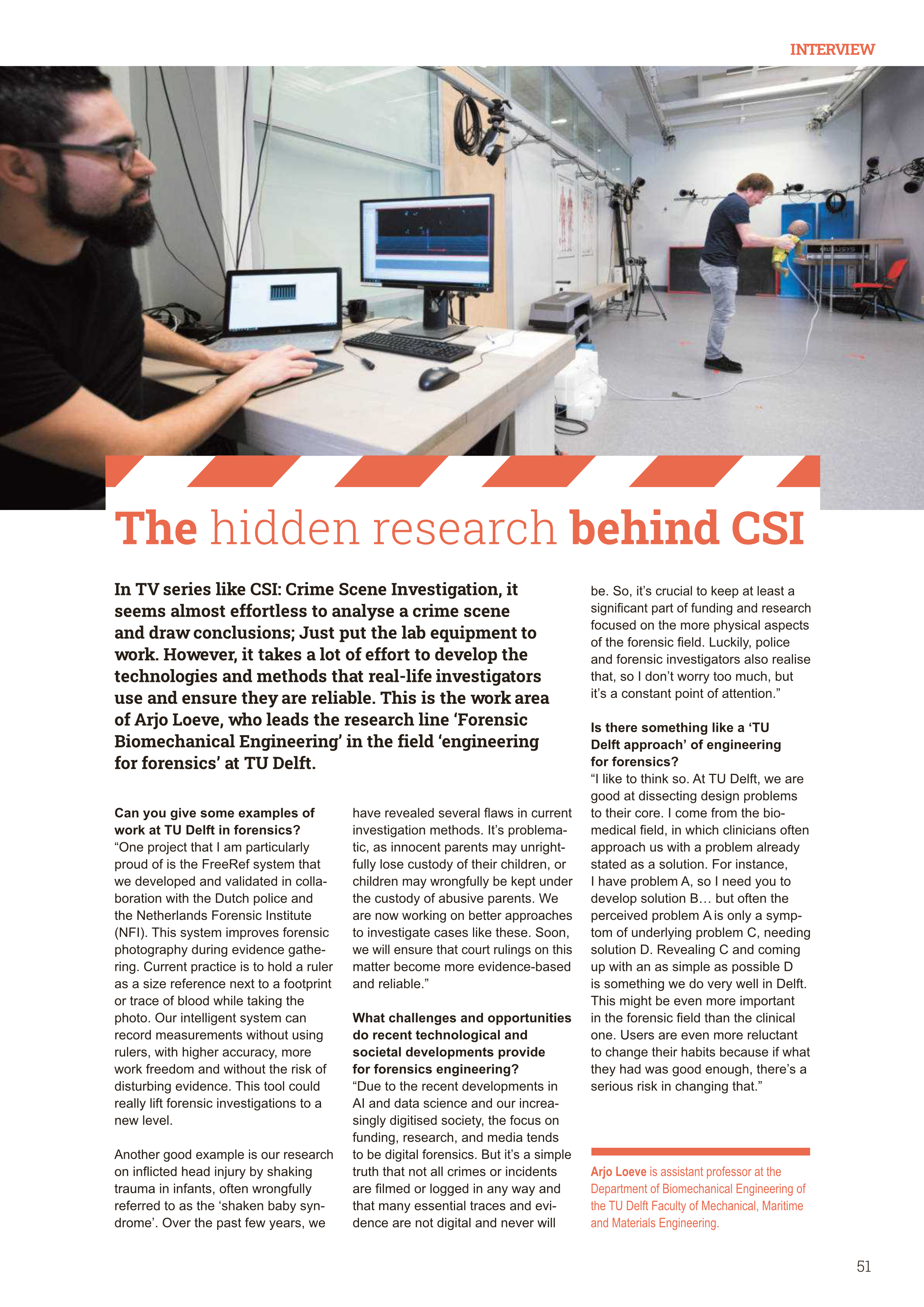The Hidden Research behind CSI
In TV series like CSI: Crime Scene Investigation, it seems almost effortless to analyse a crime scene and draw conclusions; Just put the lab equipment to work. However, it takes a lot of effort to develop the technologies and methods that real-life investigators use and ensure they are reliable. This is the work area of Arjo Loeve, who leads the research line ‘Forensic Biomechanical Engineering’ in the field ‘engineering for forensics’ at TU Delft.
Can you give some examples of work at TU Delft in forensics?
“One project that I am particularly proud of is the FreeRef system that we developed and validated in collaboration with the Dutch police and the Netherlands Forensic Institute (NFI). This system improves forensic photography during evidence gathering. Current practice is to hold a ruler as a size reference next to a footprint or trace of blood while taking the photo. Our intelligent system can record measurements without using rulers, with higher accuracy, more ork freedom and without the risk of disturbing evidence. This tool could really lift forensic investigations to a new level.
Another good example is our research on inflicted head injury by shaking trauma in infants, often wrongfully referred to as the ‘shaken baby syndrome’. Over the past few years, we have revealed several flaws in current investigation methods. It’s problematic, as innocent parents may unrightfully lose custody of their children, or children may wrongfully be kept under the custody of abusive parents. We are now working on better approaches to investigate cases like these. Soon, we will ensure that court rulings on this matter become more evidence-based and reliable.”
What challenges and opportunities do recent technological and societal developments provide for forensics engineering?
“Due to the recent developments in AI and data science and our increasingly digitised society, the focus on funding, research, and media tends to be digital forensics. But it’s a simple truth that not all crimes or incidents are filmed or logged in any way and that many essential traces and evidence are not digital and never will be. So, it’s crucial to keep at least a significant part of funding and research focused on the more physical aspects of the forensic field. Luckily, police and forensic investigators also realise that, so I don’t worry too much, but it’s a constant point of attention.”
Is there something like a ‘TU Delft approach’ of engineering for forensics?
“I like to think so. At TU Delft, we are good at dissecting design problems to their core. I come from the biomedical field, in which clinicians often approach us with a problem already stated as a solution. For instance, I have problem A, so I need you to develop solution B… but often the perceived problem A is only a symptom of underlying problem C, needing solution D. Revealing C and coming up with an as simple as possible D is something we do very well in Delft. This might be even more important in the forensic field than the clinical one. Users are even more reluctant to change their habits because if what they had was good enough, there’s a serious risk in changing that.”
Arjo Loeve is assistant professor at the Department of Biomechanical Engineering of the TU Delft Faculty of Mechanical, Maritime and Materials Engineering.

